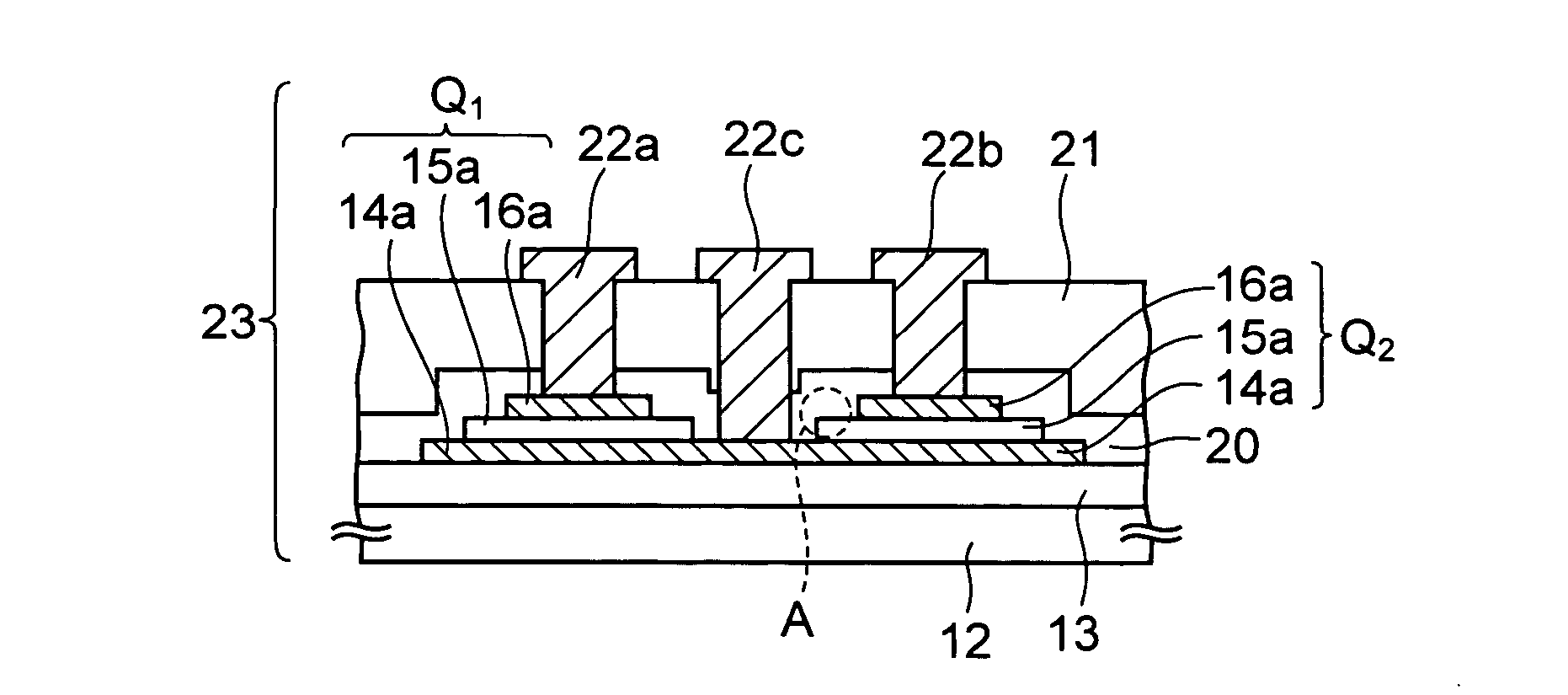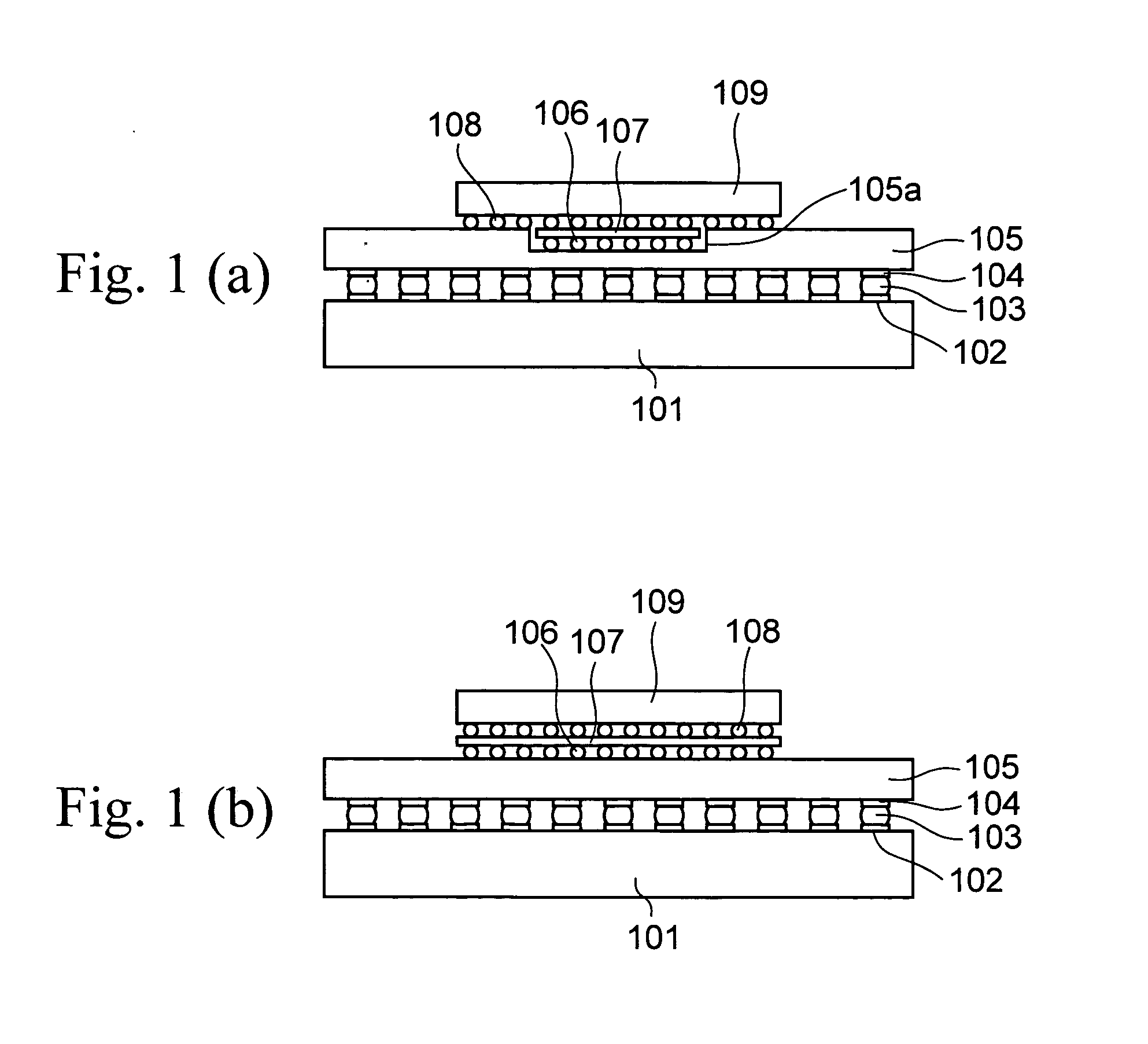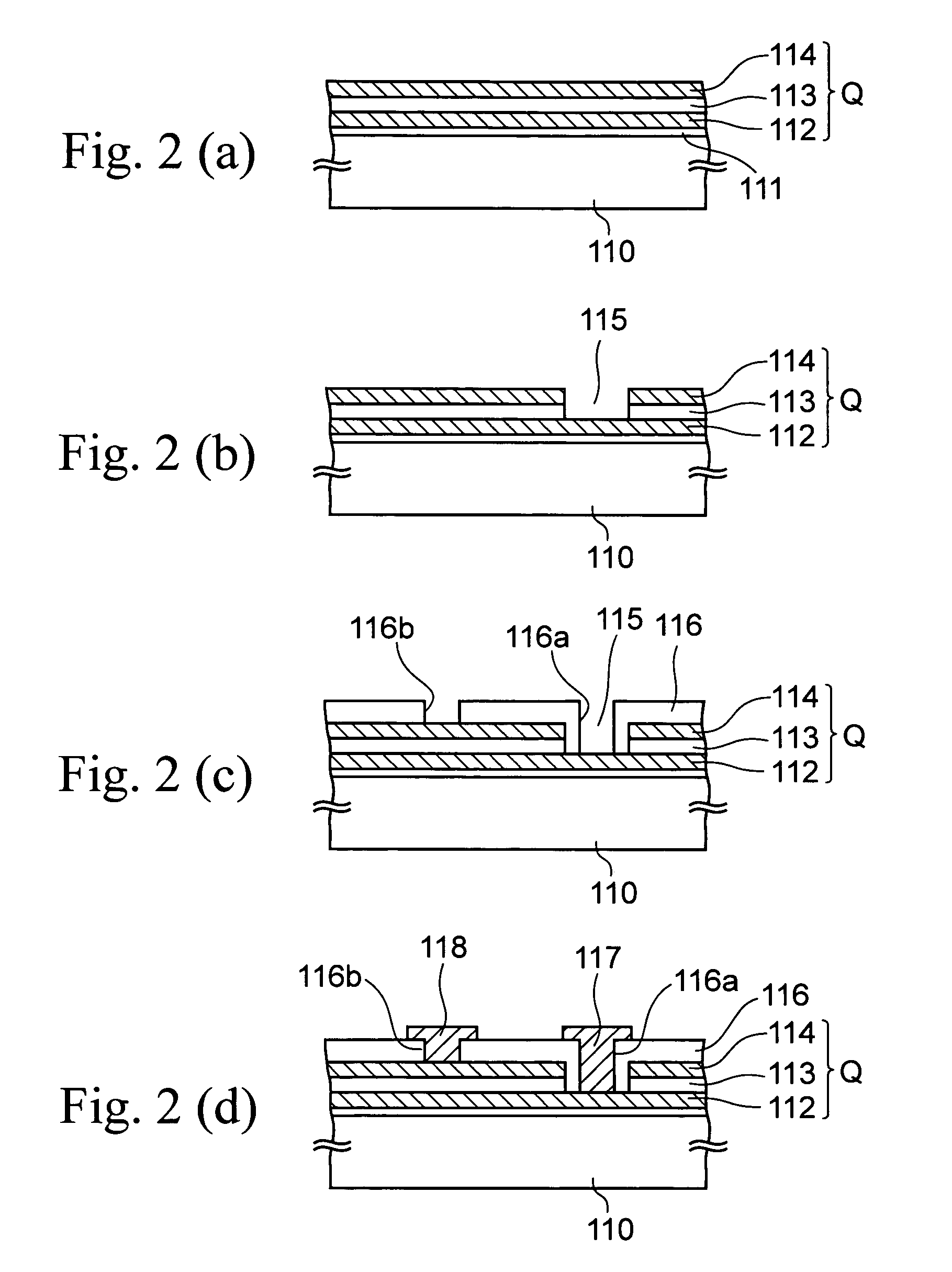Capacitive element, method of manufacture of the same, and semiconductor device
a capacitive element and manufacturing method technology, applied in the direction of structural fixed capacitor combination, stacked capacitor, thin/thick film capacitor, etc., can solve the problems of increasing the leakage current of the capacitive element, the difficulty of decoupling capacitor, etc., to achieve the effect of increasing the miniaturization of the electronic instrument, small thickness, and increasing the adhesion strength
- Summary
- Abstract
- Description
- Claims
- Application Information
AI Technical Summary
Benefits of technology
Problems solved by technology
Method used
Image
Examples
first embodiment
(1) FIRST EMBODIMENT
[0062] FIGS. 4 to 7 are cross-sectional views of a capacitive element in the process of being manufactured according to a first embodiment of the present invention.
[0063] In order to manufacture this capacitive element, first, as shown in FIG. 4(a), a titanium (Ti) layer having a thickness of 300 nm and a copper layer having a thickness of approximately 250 nm are formed on a silicon substrate (supporting substrate) 10 as an adhesion layer 11 by sputtering.
[0064] Next, for this substrate 10, liquid polyimide resin (varnish) dissolved in a solvent is applied on the adhesion layer 11 by spin-coating under the following conditions: the number of revolutions is 1000 rpm, and the coating time is 30 seconds. Subsequently, this substrate 10 is put on a hot plate (not shown), and this polyimide resin is precured by heating at a substrate temperature of 90° C., and is then thermoset by baking at a substrate temperature of 400° C., thus forming a base 12 in a film form h...
second embodiment
(2) SECOND EMBODIMENT
[0100] This embodiment differs from the first embodiment only in materials constituting the lower barrier layer 13 and the upper barrier layer 20, but is the same as the first embodiment in the other aspects. Accordingly, a description will be given with reference to FIGS. 4 to 7 of the first embodiment.
[0101] In the first embodiment, the upper barrier layer 20 is made of the alumina layer. On the other hand, in this embodiment, the barrier layer 20 is made of the same material as the capacitor dielectric layers 15a, e.g., BST or PZT, in the step of FIG. 6(b).
[0102] For example, in the case where the capacitor dielectric layers 15a are made of BST, the BST is deposited on the capacitors Q1 and Q2 to a thickness of 100 nm by sputtering using a gas mixture of Ar gas and O2 gas as sputtering gas. The deposited BST is used as the upper barrier layer 20. As deposition conditions in this case, for example, the following conditions are employed: the Ar gas to O2 gas ...
third embodiment
(3) THIRD EMBODIMENT
[0105]FIG. 9 is a cross-sectional view of a semiconductor device according to this embodiment.
[0106] As shown in FIG. 9, this semiconductor device is made by mounting the capacitive element 23 fabricated in the first or second embodiment on a semiconductor element 32 such as an LSI. First electrode pads 33a to 33c are provided in the semiconductor element 32, and the first electrode pads 33a to 33c correspond to the respective pads 22a to 22c of the capacitive element 23. The electrode pads 33a to 33c are made of Au, and electrically and mechanically connected to the pads 22a to 22c by ultrasonic bonding.
[0107] The function of the capacitive element 23 in this case is not particularly limited, but the capacitive element 23 is preferably used as decoupling capacitors for the semiconductor element 32.
[0108] Furthermore, second electrode pads 34 are provided in the semiconductor element 32, and the second electrode pads 34 are electrically and mechanically connec...
PUM
| Property | Measurement | Unit |
|---|---|---|
| total height | aaaaa | aaaaa |
| thickness | aaaaa | aaaaa |
| thickness | aaaaa | aaaaa |
Abstract
Description
Claims
Application Information
 Login to View More
Login to View More - R&D
- Intellectual Property
- Life Sciences
- Materials
- Tech Scout
- Unparalleled Data Quality
- Higher Quality Content
- 60% Fewer Hallucinations
Browse by: Latest US Patents, China's latest patents, Technical Efficacy Thesaurus, Application Domain, Technology Topic, Popular Technical Reports.
© 2025 PatSnap. All rights reserved.Legal|Privacy policy|Modern Slavery Act Transparency Statement|Sitemap|About US| Contact US: help@patsnap.com



